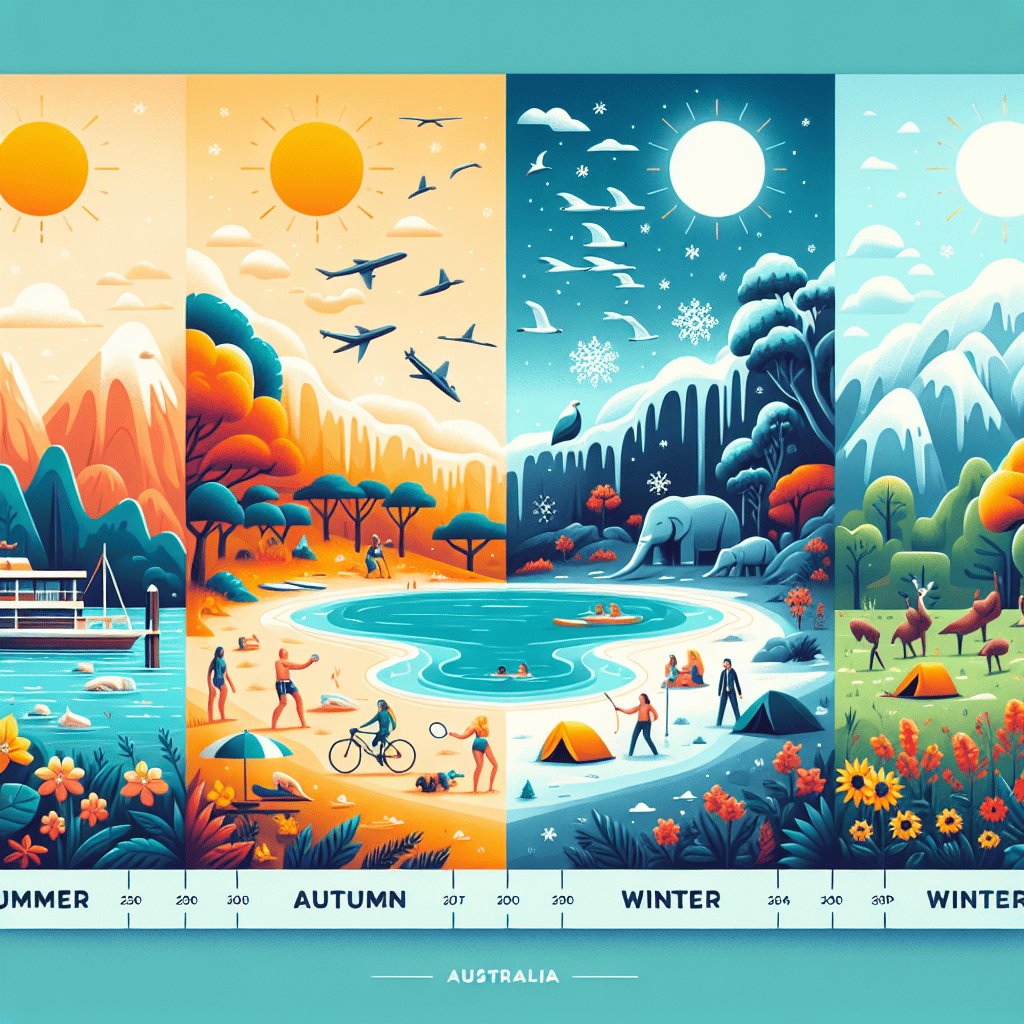Australia, the land “Down Under,” is a dream destination for travelers worldwide, offering diverse landscapes, unique wildlife, and vibrant cities. But planning a trip to Australia requires considering its varied climates and seasons, which are opposite to those in the Northern Hemisphere. This guide will help you explore the **best time to visit Australia** by offering insights into its seasons, key travel experiences, and regional climates.
Seasons in Australia: An Overview
Australia experiences four distinct seasons, but given the country’s size and diversity, weather conditions vary greatly between regions. Below are Australia’s seasons and their timelines:
- Summer (December to February)
- Autumn (March to May)
- Winter (June to August)
- Spring (September to November)
When to Go Based on Seasonal Highlights
Here’s a deep dive into Australia’s seasons and the perks they offer. Each season brings its own magic, so your choice ultimately depends on your interests and the type of experience you’re seeking.
Summer in Australia (December to February)
Summer is prime time for travelers who enjoy beaches and outdoor adventures. With Christmas and New Year celebrations happening this time of year, Australia’s coastal cities, such as Sydney, Gold Coast, and Melbourne, are buzzing with festivities.
Why choose summer?
- Perfect beach weather in cities like Bondi Beach in Sydney
- Great Barrier Reef experiences optimal visibility for snorkeling and diving
- Iconic Australian Open tennis tournament in Melbourne
Things to keep in mind:
- The Northern Territory and northern Queensland experience a “wet season,” with heavy rain and high humidity
- Popular tourist destinations can get crowded, so early bookings are a must
Autumn in Australia (March to May)
If you prefer more moderate weather, **autumn in Australia** is a fantastic time for a visit. Tourists and locals alike enjoy the stunning foliage in regions like the Blue Mountains near Sydney and the wine regions in South Australia.
Why choose autumn?
- Mild temperatures make it ideal for outdoor activities such as hiking and sightseeing
- Fewer crowds compared to summer months
- Autumn wine festivals in destinations like the Barossa Valley
Things to keep in mind:
- Popular destinations like Uluru are more comfortable to explore during this cooler season
- The weather in Tasmania starts to cool, offering crisp, fresh days
Winter in Australia (June to August)
Winter in Australia is subtler than in many other parts of the world, but it offers its own appeal. Ski enthusiasts will enjoy snow-capped mountains, while adventurers can escape to the warmer northern regions.
Why choose winter?
- Enjoy skiing and snowboarding in the Australian Alps
- Mild northern regions like Darwin and the Great Barrier Reef have pleasant weather with minimal rainfall
- Prime whale-watching season along the east and west coasts
Things to keep in mind:
- It can be quite chilly in the southern regions, including Melbourne and Hobart
- Off-season rates mean fewer crowds and more affordable accommodations
Spring in Australia (September to November)
Spring is one of the most vibrant seasons in Australia, known for blooming wildflowers and outdoor adventures. Temperatures begin to warm but remain comfortable, making it the perfect season for exploring various parts of the country.
Why choose spring?
- Witness Australia’s famous wildflower season in Western Australia
- Ideal surf conditions along the east coast beaches
- Favorable weather for exploring the Outback and Great Ocean Road
Things to keep in mind:
- Spring school holidays might mean busier parks and beaches
- Temperatures start to climb towards the tail end of spring, especially in the north
Regional Climate Considerations
Given Australia’s vast size, its regions experience different climates, which can affect the best time to visit each area.
1. Coastal Cities (Sydney, Melbourne, Brisbane)
– Summer and spring are ideal for these destinations due to warm weather and plenty of outdoor activities.
– Winter can be chilly, especially in Melbourne, so pack warm clothing if visiting from June to August.
2. The Outback (Uluru, Alice Springs)
– The outback is scorching hot in summer, so autumn and spring are the best times to visit due to milder temperatures.
– Winter can also be enjoyable for those who don’t mind cooler nights.
3. Northern Australia (Cairns, Darwin)
– Winter is often considered the best time to visit northern Australia, as it aligns with its “dry season,” offering lower humidity and clear skies.
– Avoid the summer “wet season,” as heavy rains and cyclones can disrupt plans.
4. Tasmania
– Tasmania shines in summer with warm days perfect for exploring national parks and its wilderness areas.
– Autumn and spring are also pleasant, showcasing vibrant seasonal foliage.
Tips for Choosing the Right Time for Your Trip
To determine the **best time to visit Australia**, consider the following:
- Your interests: Are you a beach lover, an adventure junkie, or a wildlife enthusiast?
- Budget: Visiting during off-peak seasons can help you save money.
- Events: Check for major festivals and sporting events that could enhance your experience.
- Weather: Account for regional variations in climate to avoid unexpected surprises.
Final Thoughts
Australia offers something extraordinary during every season. Whether you’re soaking up the summer sunshine on Bondi Beach, sipping wine at a harvest festival in autumn, skiing down snowy slopes in winter, or marveling at springtime wildflowers, you’ll find plenty to enjoy throughout the year.
By understanding Australia’s seasons and regional climates, you can plan the ultimate trip that aligns perfectly with your preferences. No matter when you choose to visit, one thing is certain: an incredible adventure awaits in the heart of the land “Down Under.”
“`


